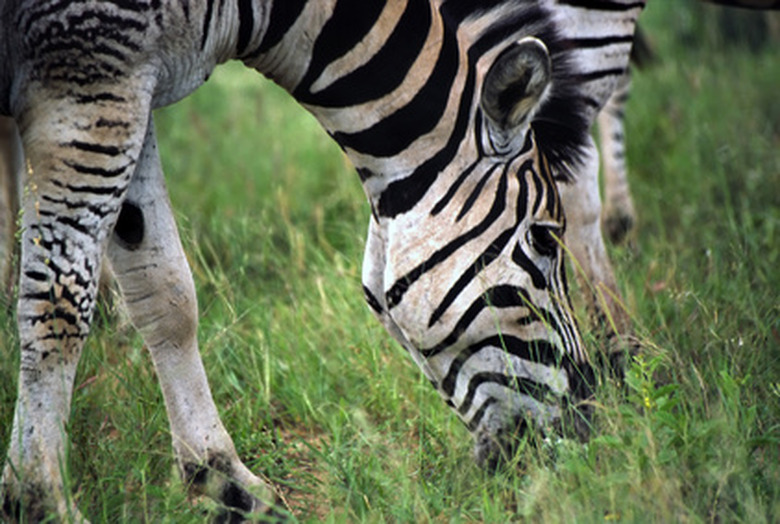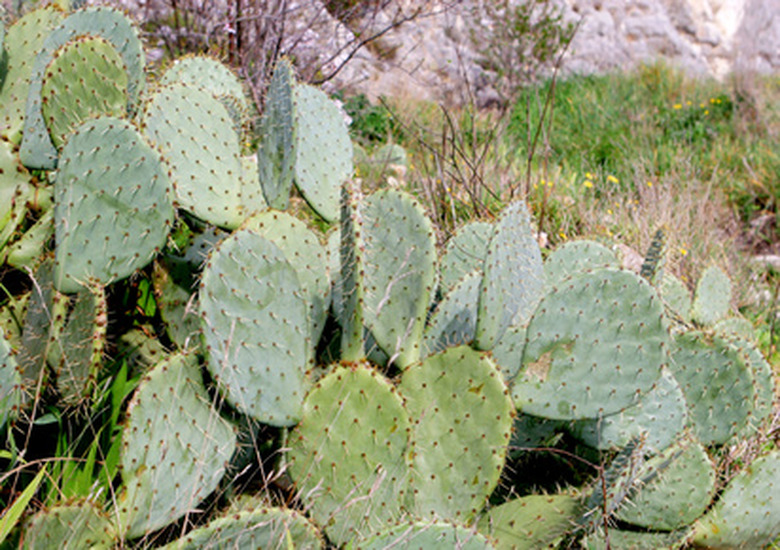Physical & Behavioral Adaptations Of Plants & Animals
Most living things require food, water, sunlight, oxygen, and essential minerals to survive and grow. Environments with colder, wetter, dryer, or almost inhospitable conditions challenge plants and animals. To overcome these survival blockades, plants and animals adapt survival techniques–from growing thick fur to changing their whole body composition.
In this post, we're going over some adaptation definitions and some examples of both animal and plant adaptations examples to clearly illustrate this idea.
Tundra Example: Bristlecone Pine
Tundra Example: Bristlecone Pine
Bristlecone pines are one of the world's oldest living organisms. The gnarled, reddish brown trees found high in mountain tundras can grow to more than 4,000 years old because of adaptations. The tree developed an adaptation allowing it to conserve moisture, grow slowly, and begin growth each season as soon as moisture and temperature conditions are adequate.
Bristlecone pines continue to grow while parts of the bark die back. As part of the bark dies, the tree produces pitch–a sap-like resin– in the woody parts which preserves the wood and retains more moisture.The oldest known living Bristlecone Pine is called 'Methuselah' and has been dated at a mighty 4,789 years of age.
Rain Forest Plant Adaptations Examples
Rain Forest Plant Adaptations Examples
Rain forest vegetation grows in thick layers. Some of the layers get sunlight, but the bottom layers get little or no sunlight.
One of the best plant adaptations examples in the rainforest is the evolution of the Bambusa tulda. The Bambusa tulda, or Spineless Indian Bamboo Calcutta Cane, physically adapts to its environment by growing tall fast to absorb as much rain and sunlight as possible. Bambusa tulda finds home in the biome of the Southeast Asian rain forest which receives more than 100 inches of rain per year.
Deserts and Flower Adaptations
Deserts and Flower Adaptations
Lack of water creates a survival problem for all living organisms like plants and animals. Animals are more susceptible to extremes in temperature than plants, which makes living in a desert habitat more challenging. Desert animals–like reptiles, certain birds and mammals–have evolved behavioral and physiological mechanisms to solve the heat and water problems.
To avoid overwhelming heat, for example, the Phainopepla–a glossy little dessert black bird–breeds during the cooler spring and abandons the desert for cooler areas at higher elevations or along the coast. Other desert birds are more active at dawn and within a few hours of sunset when the sun is less intense.
Smaller desert mammals, like prairie dogs, burrow in the soil or sand to escape the high temperatures at the desert surface. Some rodents cover the holes to their tunnels to keep out stifling desert air.
Flowers in the desert have also evolved adaptations. Some flower adaptations include dropping their leaves/petals when water is scarce in order to avoid losing water vapor through their pores. Other flower adaptations include a fast reproductive cycle to take advantage of quick storms/rainfall as well as changing shape after fertilization to drive pollinators towards unfertilized flowers.
Rain Forests: Plant Adaptations
Receiving 80 to 100 inches of rain per year, rain forest plants adapted to the excess water by developing "drip tips" and long, grooved leaves to drip water to the forest floor. Other plants developed oily, waterproof coatings to release water.
Rain forests grow in the thick layers. The canopy–the stretch of leaves and flowers shading the rain forest–keeps the forest cooler but also blocks out most sunlight. To absorb as much sunlight as possible, plants in the understory–the nearest plant layer to the forest floor–developed large, broad leaves. Any sunlight they receive soaks into their plant cells.
Other rain forest trees have leaf stalks that turn with the movement of the sun to absorb delicious sunshine. Epiphytes, like orchids and bromeliads, grow on tree tops to catch as much sunlight as possible from their taller neighbors.
Migration
Instead of migrating, some animals adapted the behavior instinct to sleep–or hibernate– through a changing environment. Bears, for instance, survive the winter by entering a deep sleep. The bear lives off of the fat it stored in the spring and summer from eating trout and other fish. This aligns with the behavioral adaptation definition that we went over earlier.
Because the animal does not use much energy sleeping so many months, little sunlight, food and warmth do not endanger the animal but instead protect it from the harsh outdoors.
Animal Survival: Migration and Hibernation
With these examples, we'll be getting into behavioral adaptations. The behavioral adaptation definition is an adaptation or change in the behavior of an organism that allows it to survive instead of a change in structure/physical makeup.
In general, animals have strong survival instincts. An instinct is a behavioral adaption with which an animal is born. For example, from birth, a kitten instinctively knows to sip milk from its mother (see how that lines up with the behavioral adaptation definition we went over earlier).
Survival instincts lead some animals to migrate, move a long distance together, to find habitats that meet their needs better for warmer or colder seasons. The wildebeest on the African Serengeti, for example, continually migrate long distances in search of food and safety.
Cite This Article
MLA
Carver, Noelle. "Physical & Behavioral Adaptations Of Plants & Animals" sciencing.com, https://www.sciencing.com/physical-behavioral-adaptations-plants-animals-7240650/. 22 November 2019.
APA
Carver, Noelle. (2019, November 22). Physical & Behavioral Adaptations Of Plants & Animals. sciencing.com. Retrieved from https://www.sciencing.com/physical-behavioral-adaptations-plants-animals-7240650/
Chicago
Carver, Noelle. Physical & Behavioral Adaptations Of Plants & Animals last modified March 24, 2022. https://www.sciencing.com/physical-behavioral-adaptations-plants-animals-7240650/






